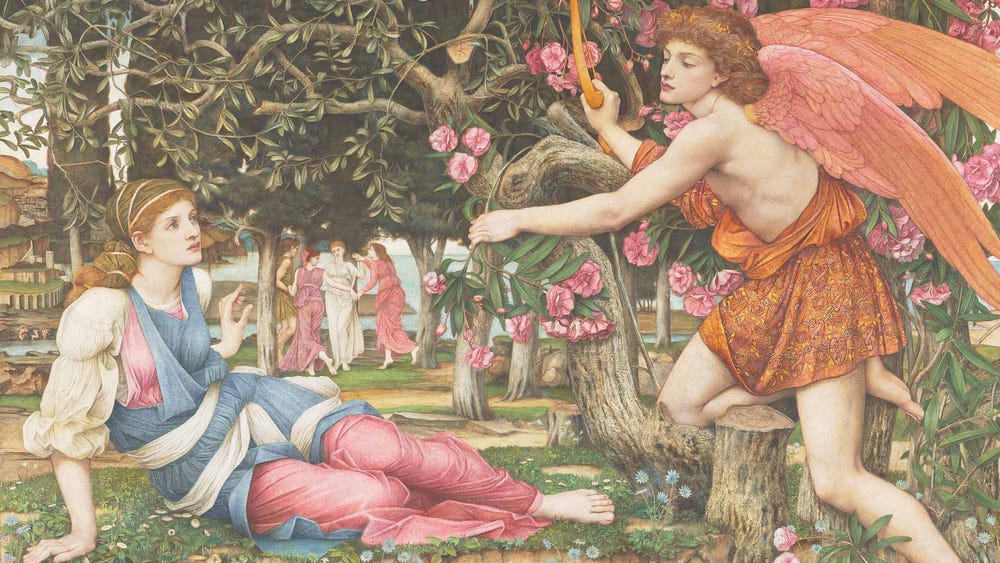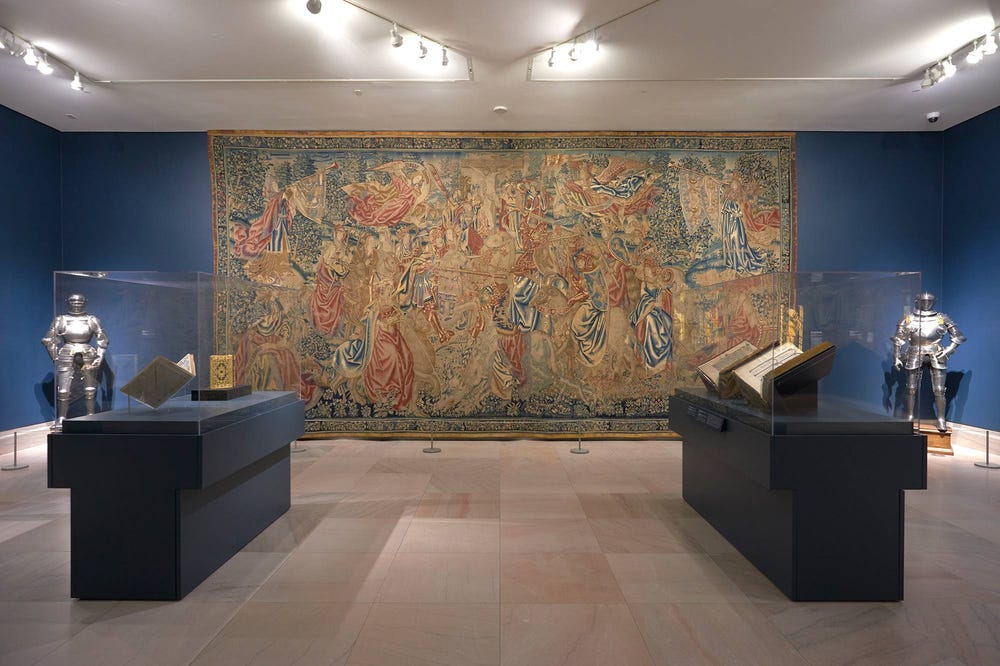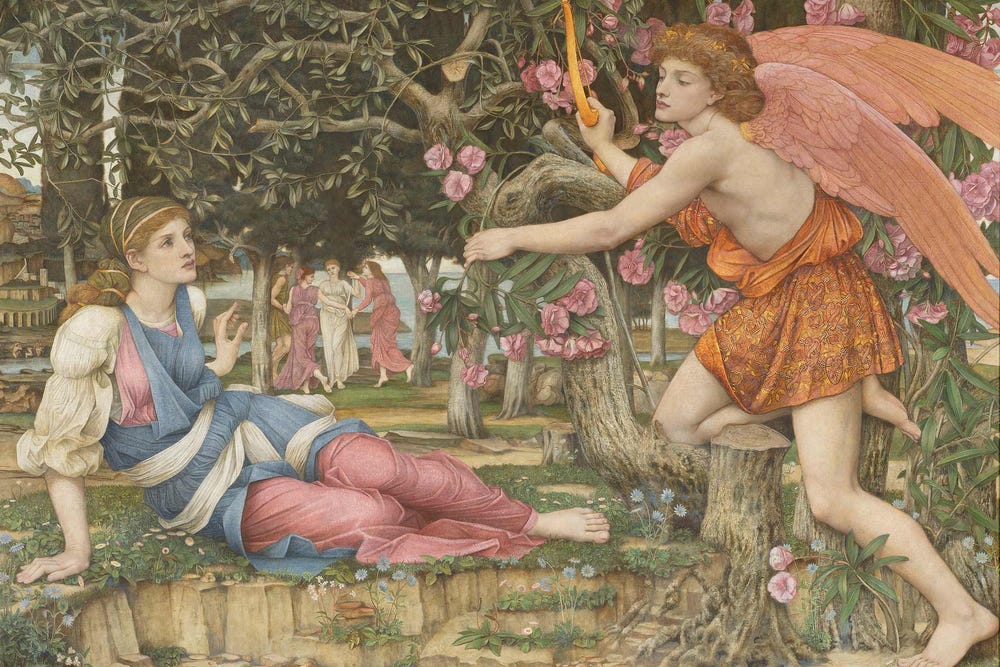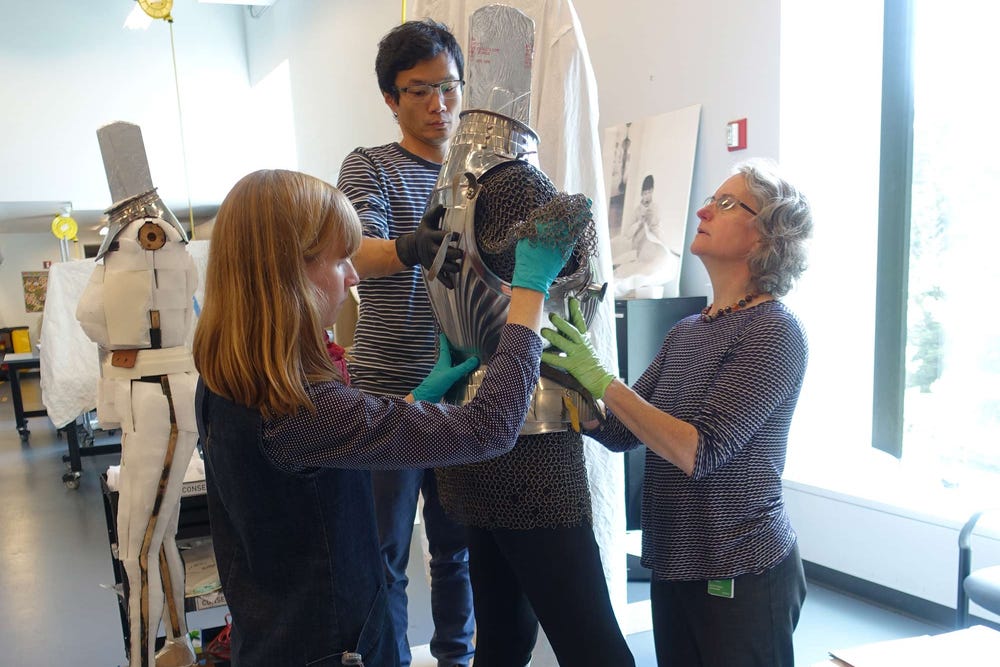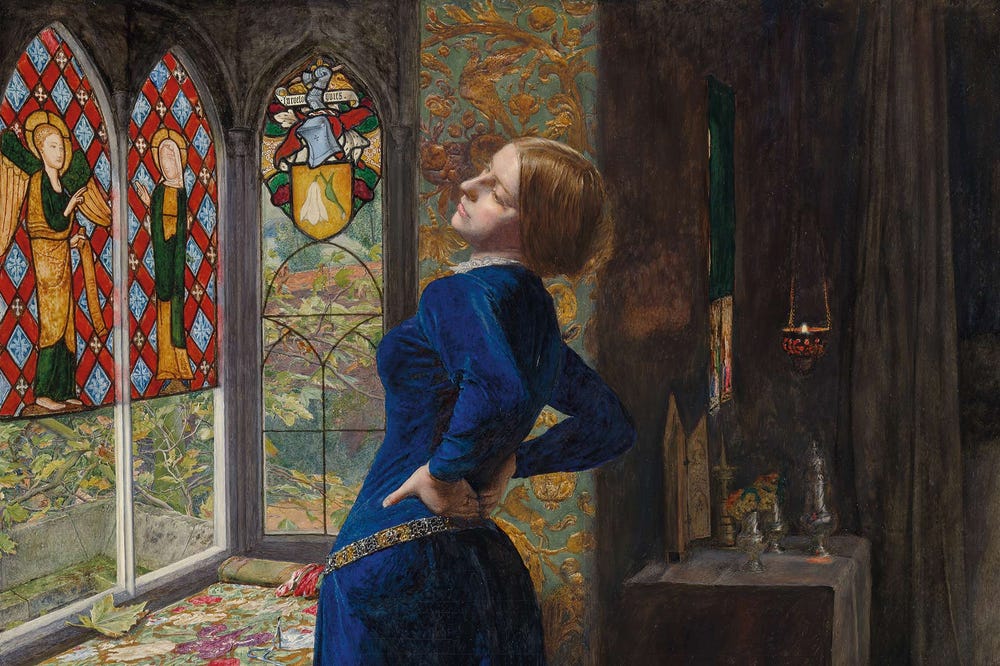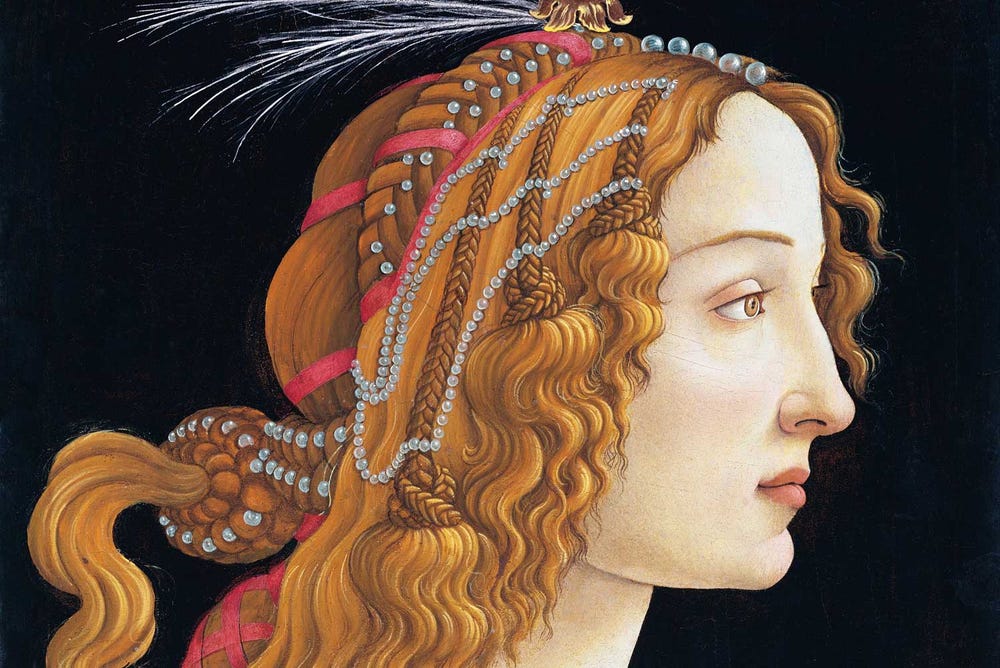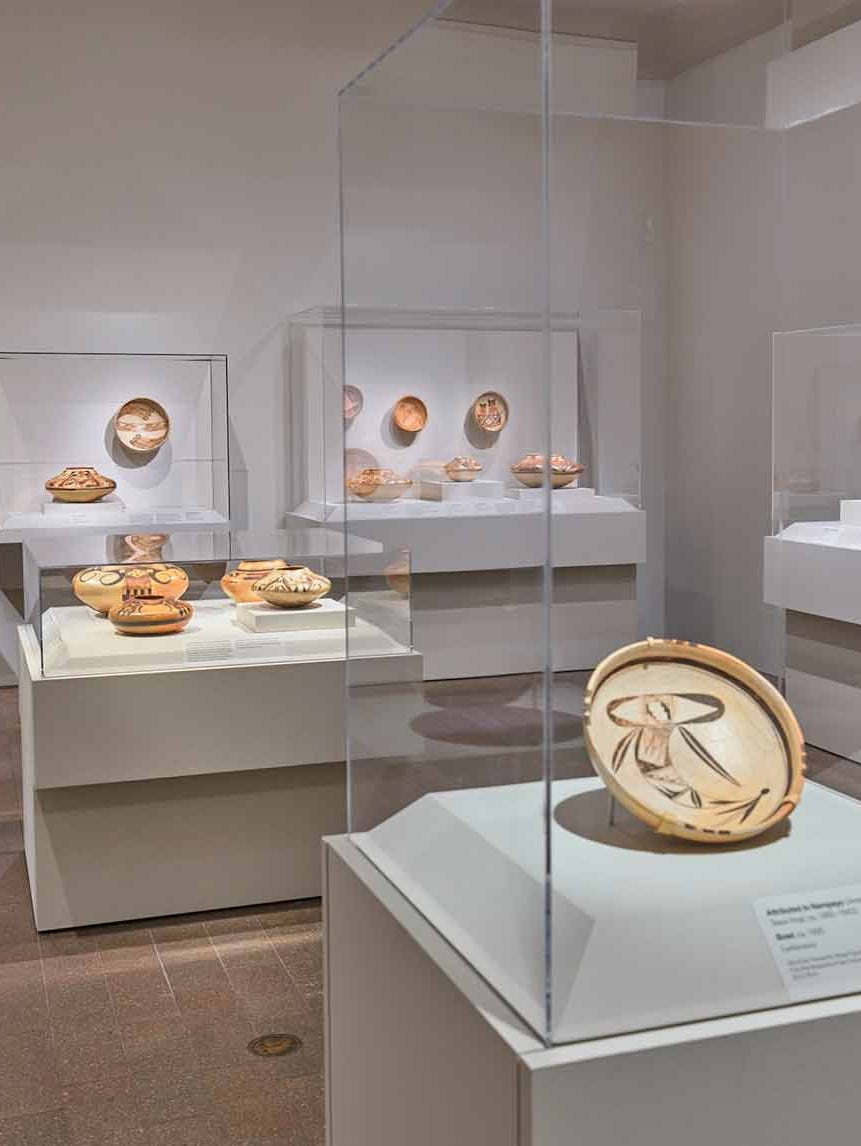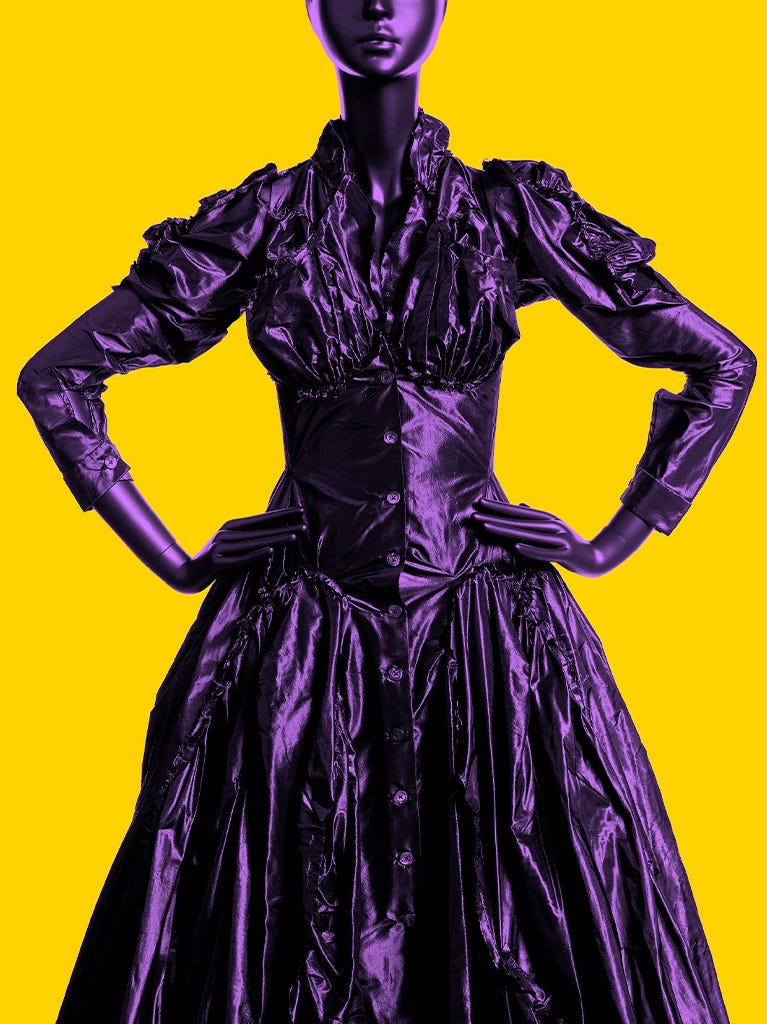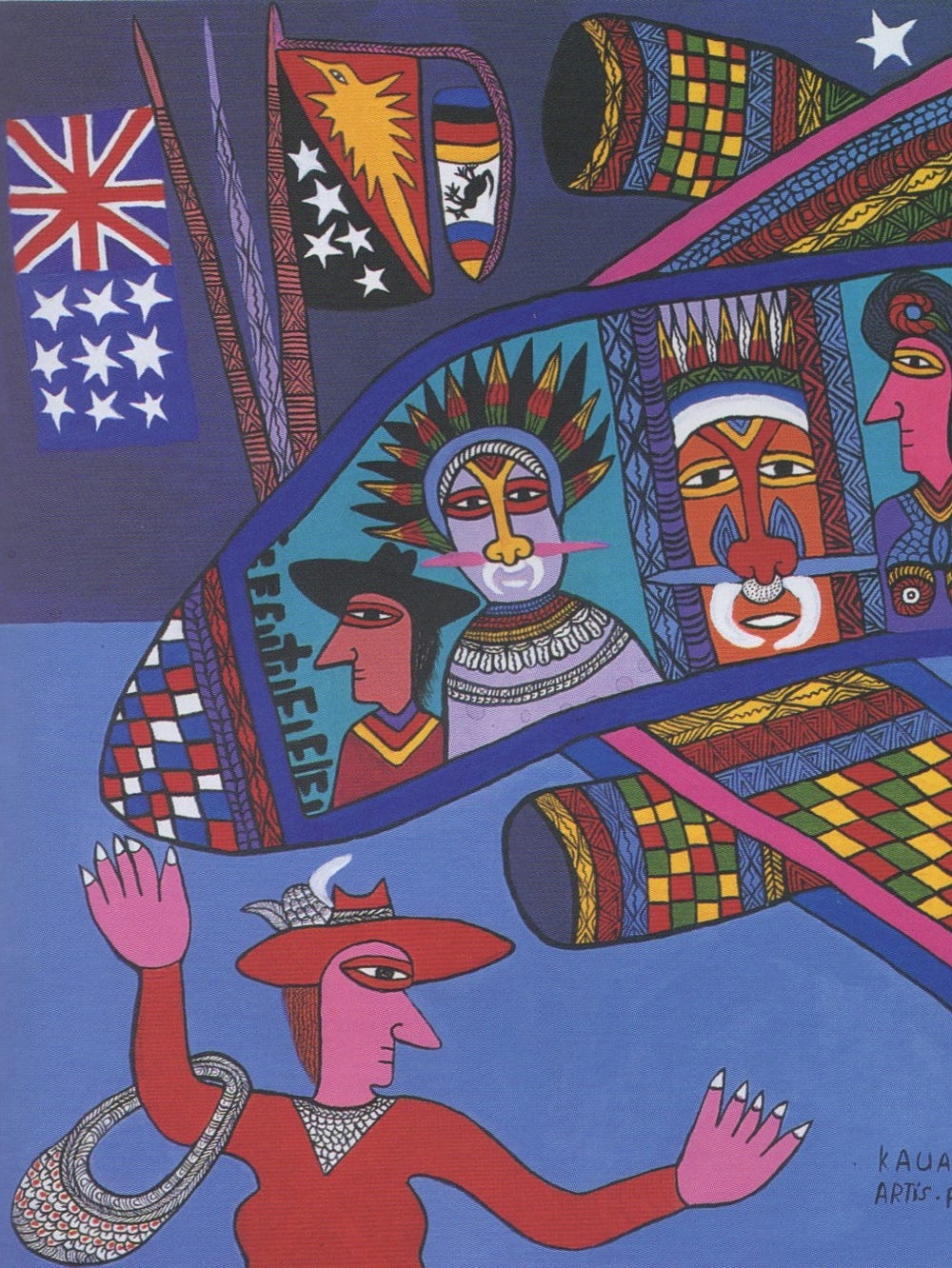John Roddam Spencer Stanhope, Love and the Maiden (detail), 1877. Oil, gold paint, and gold leaf on canvas, 54 x 79 in. (137.2 x 200.7 cm). Fine Arts Museums of San Francisco, Museum purchase, European Art Trust Fund, Grover A. Magnin Bequest Fund, and Dorothy Spreckels Munn Bequest Fund, 2002.176
Truth and Beauty: The Pre-Raphaelites and the Old Masters
Jump to
Truth and Beauty: The Pre-Raphaelites and the Old Masters is the first major international exhibition to assemble works by England’s nineteenth-century Pre-Raphaelite Brotherhood with the medieval and Renaissance masterpieces that inspired them. Important loans of paintings, works on paper, and decorative arts from international collections, as well as works drawn from the collections of the Fine Arts Museums of San Francisco, demonstrate the Pre-Raphaelites’ fascination with Italian masters, including Sandro Botticelli, Raphael, and Paolo Veronese, as well as northern Renaissance painters such as Jan van Eyck and Hans Memling.
In depth
Truth and Beauty: The Pre-Raphaelites and the Old Masters is the first major international loan exhibition to assemble works of art by members of England’s nineteenth-century Pre-Raphaelite Brotherhood with the early Italian, Netherlandish, and German art that inspired them. Organized by the Fine Arts Museums of San Francisco, this presentation will demonstrate the Pre-Raphaelites’ fascination with the Italian old masters, including Fra Angelico (ca. 1400 – 1455) and Pietro Perugino (ca. 1450 –1523), and their northern contemporaries such as Jan van Eyck (ca. 1390 – 1441) and Hans Memling (1430/1440 – 1494). Truth and Beauty will trace the Brotherhood through the nineteenth-century “rediscovery” of Sandro Botticelli (1444 or 1445 – 1510) by the English art critics John Ruskin (1819 – 1900) and Walter Pater (1839 – 1894), which paralleled the tempera-paint revival executed by the second-generation Pre-Raphaelites. The visual affinities between these works will create evocative juxtapositions that will also demonstrate the influence of High Renaissance painter Raphael (1483 – 1520) and artists of the late Renaissance, such as Titian (ca. 1488 – 1576) and Paolo Veronese (1528 – 1588), on the Pre-Raphaelites and select contemporaries.
Their attraction to the art of the past was not limited to paintings, however, and the presentation will also feature stained glass and tapestries in emulation of Flemish and French textiles. The varied sources that informed the Pre-Raphaelite’s aesthetic vocabulary in dialogue with their own nineteenth-century creations will demonstrate the importance of the work that inspired the PRB and redefine more broadly the PRB’s style. These arrangements will highlight the nuanced paradoxes of the Pre-Raphaelite mission, namely, their efforts to be fundamentally modern by emulating the past, as well as their dichotomous criticism and veneration of Raphael and his artistic impact.
Pre-Raphael: The Inspiration of Early Italian and Early Netherlandish Art
The jewel-toned color palette of the Pre-Raphaelites emulated that of early Netherlandish artists, including Jan van Eyck (ca. 1390 – 1441) and Hans Memling (1430/1440 – 1494), whose panels Rossetti and Holman Hunt admired in Bruges on an 1849 “Pre-Raphaelite pilgrimage.” As students training at the Royal Academy, they also could study works from the national collection, which was housed in the same building. There they would have known a rare example from the early Flemish school on public view in London at that time, Van Eyck’s Arnolfini Portrait (1434, National Gallery, London).
The Rediscovery of Botticelli and the Tempera Revival
Pre-Raphaelite artists, including Holman Hunt, Millais, and second-generation Pre-Raphaelite Edward Burne-Jones (1833 – 1898), all traveled to Italy. Burne-Jones, known as the “English Quattrocentist,” made four visits and filled his sketchbooks with depictions of the works that impressed him, especially in Florence’s Uffizi Gallery. During his second trip, in 1862, he traveled with Ruskin, who, along with Pater, is credited with the “rediscovery” of Botticelli in the nineteenth century. On his third visit, in 1873, Burne-Jones spent time with the English artist John Roddam Spencer Stanhope (1829 – 1908), who owned a villa in the hills outside of Florence. Stanhope’s own works — including his masterpiece, Love and the Maiden (1877, Fine Arts Museums of San Francisco) — reflect access to Botticelli’s paintings in the Uffizi Gallery. Such unmediated observations revealed subtleties that reproductions of the paintings of the time could not supply, and encouraged attempts by the Pre-Raphaelites to recover old master painting techniques.
The Influence of Raphael and the “Post-Raphaelites”
Although the Pre-Raphaelites’ initial style ostensibly rejected the idealized aesthetics of Raphael, his followers, and the Baroque artists, these parameters fluctuated over the course of each artist’s career. Paradoxically, the Pre-Raphaelites’ “Immortals” list also included Raphael himself along with select “Post-Raphaelites” such as Veronese and Tintoretto (1560 – 1635). Examples from Rossetti’s mature period are perhaps the most evocative examples of this development, and in paintings such as Monna Vanna (1866, Tate, London) and Veronica Veronese (1872, Delaware Art Museum, Wilmington), the artist overtly emulated Raphael and Veronese, respectively. Given Rossetti’s early proclamations of disdain for the “Post-Raphaelite” aesthetic, these sumptuous paintings reveal a surprising shift in his appreciation for the Italian Renaissance, particularly sixteenth-century Venetian paintings.
Decorative Arts: Tapestries, Stained Glass, and Ecclesiastic Decorations
First- and second-generation Pre-Raphaelites collected works by the old masters and filled their homes with harmonious decorative arts. They lived among these objects and also designed “medievalized” merchandise, including lush tapestries with figures and flora that quote from Flemish and French precedents. This final section of the exhibition will suggest compelling connections between sixteenth-century and nineteenth-century textiles, punctuated by complementary stained glass and decorations, together creating a rich multimedia experience in Rosekrans Court.
In the news
Stories
The Pre-Raphaelites were not the first group of artists to enter into a visual conversation with their predecessors and they will not be the last. From the farm-to-table rationale behind the Slow Food movement to the do-it-yourself impetus behind Etsy, the longing for a simpler and more authentic or sincere past seems to be endemic of modern and rapidly industrializing cultures. Melissa Buron, director of the art division at the Fine Arts Museums and the exhibition curator, from the exhibition catalogue
Gallery
Sponsors
This exhibition is organized by the Fine Arts Museums of San Francisco.
Presenting Sponsors
John A. and Cynthia Fry Gunn
Diane B. Wilsey
Curator’s Circle
San Francisco Auxiliary of the Fine Arts Museums
Barbara A. Wolfe
Benefactor’s Circle
The Diana Dollar Knowles Fund
Patron’s Circle
Lucy Y. Hamilton
Ric and Suzanne Kayne
David A. Wollenberg
Additional support is provided by the Amy P. Goldman Foundation, Mrs. George Hopper Fitch, Samuel H. Kress Foundation, and Robert G. and Sue Douthit O'Donnell. Paint provided by Farrow & Ball.
Digital Story support comes from Mary Sauer and Robert Doris, in memory of Clare Marie Doris.
The catalogue is published with the assistance of the Andrew W. Mellon Foundation Endowment for Publications.
This exhibition is supported by an indemnity from the Federal Council on the Arts and the Humanities.
